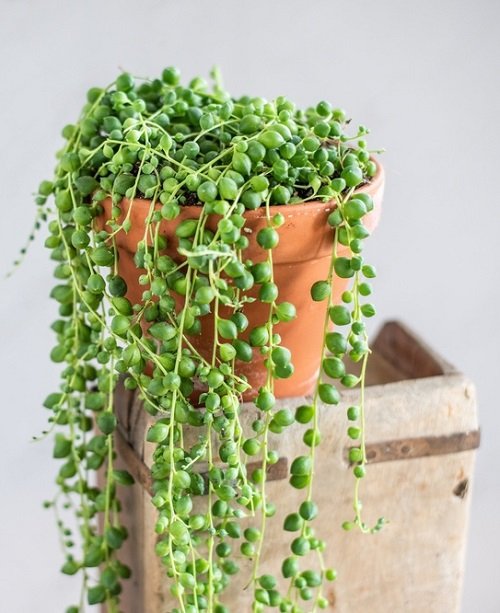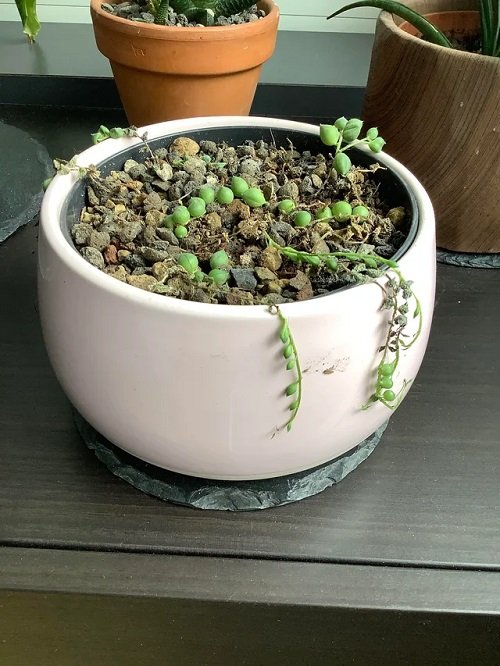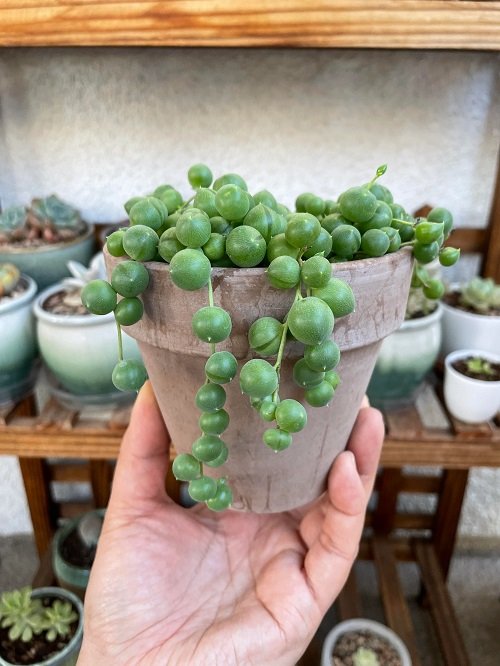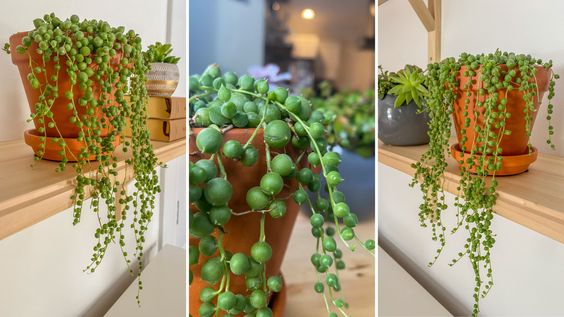Are you looking to multiply your string succulent easily? Then read How to Grow String of Pearls From Cuttings!

When you search for the best hanging succulent, Curio rowleyanus surely comes to mind first. Why not? It has unique round beads that look like peas or green pearls and is attached to stems that resemble strings. If you own it and want to have more copies, propagating it from cuttings is the best way.
How to Grow String of Pearls From Cuttings?
You’ll need a healthy cutting that’s at least 2-4 inches long and not damaged or weak. If you have a mother plant, that’s great; otherwise, borrowing a cutting from someone would be great!
1. Cutting in Soil
Once you have the cutting, place it in a shaded area away from direct sunlight for one to two days so it can form a callus. Now, why do we do this? The callus acts as a barrier that protects this succulent against rot and infection and promotes proper rooting.
Now, prepare a well-draining potting mix suitable for propagating succulents and add a bit of perlite or pumice. Use a pencil to create a small hole in the soil. Gently slide the callused thread inside, secure it with your fingers, and water it lightly to moisten the soil.
Remember the word “lightly.” You can mist it to settle the soil and provide the initial moisture, but avoid damping it. Later, keep misting to provide that slight moisture, but never overwater. Keep the pot on a bright window with indirect sunlight; you’ll see its roots grow in a few weeks.
2. A Unique Way!
If you want to keep everything easy, lay the cutting on top of the soil and wait for it to develop roots; this is another method to propagate a string of pearls from cuttings.
3. Cutting in Water
You can also propagate the string of pearls in water. Just keep the bottom half submerged in a bowl, glass, or jar filled with water and the top half dry.
Best Time for Growing String of Pearls from Cuttings

Propagating a string of pearls is the most effective method during the spring and summer months. While you can still propagate from cuttings in the fall and winter, be prepared for a slower rooting process. Propagation encourages new growth and helps thicken an existing plant or can be used to start a new one.
Best Potting Mix for Growing String of Pearls from Cuttings

- 1 part cactus soil
- 1 part perlite for improving drainage
- 1/2 part of coarse sand for drainage and aeration
- 1/2 part peat moss or coconut coir for retaining moisture
That’s it! Mix these well, and your plant will root and thrive beautifully. You can also add a bit of vermiculite if you live in a drier region.
A terra-cotta pot is recommended for planting due to its breathability, which helps prevent waterlogging. However, if unavailable, plastic or ceramic pots are adequate substitutes.
Pro Tip: While this potting mix is best for propagation, you can also propagate this succulent in 100% peat moss or coconut coir medium, but be careful with watering as these two remain moist for a long time.
What to Do After Propagating String of Pearls?
Once you have successfully propagated your String of Pearls, it is important to provide the right care for healthy growth. This plant prefers its soil to dry out completely between waterings, which usually means watering every two to four weeks, depending on factors like light exposure, temperature, and humidity.
Be vigilant and only water when the pearls (leaves) start to shrink or look wrinkled slightly, but avoid letting them become severely dehydrated or shriveled.
For lighting, if kept indoors, place your String of Pearls in a bright spot where it receives indirect sunlight, such as near a window with sheer curtains. If outdoors, choose a location with partial sun, particularly morning light, while protecting it from the more intense afternoon sun.
How Long Does It Take to Propagate String of Pearls?

The propagation time depends on local weather patterns, microclimates, and individual plant care. Usually, it takes around 3-4 weeks for the string of pearl cuttings to establish roots and start new growth.
Don’t panic if it doesn’t happen; they might root a few days earlier or later, too!



